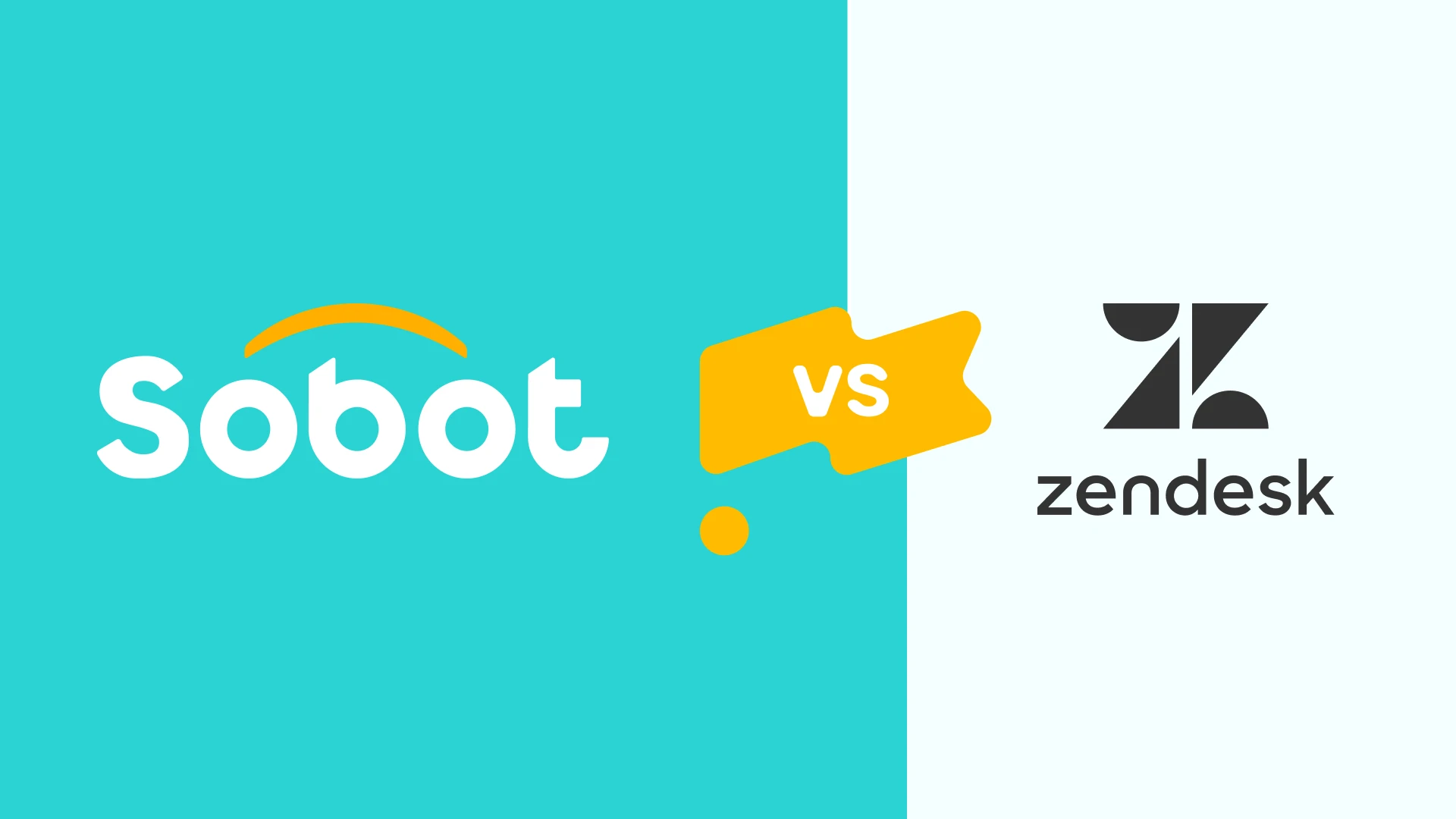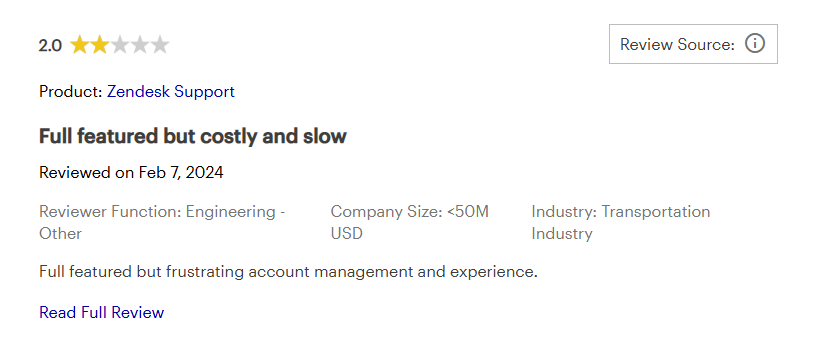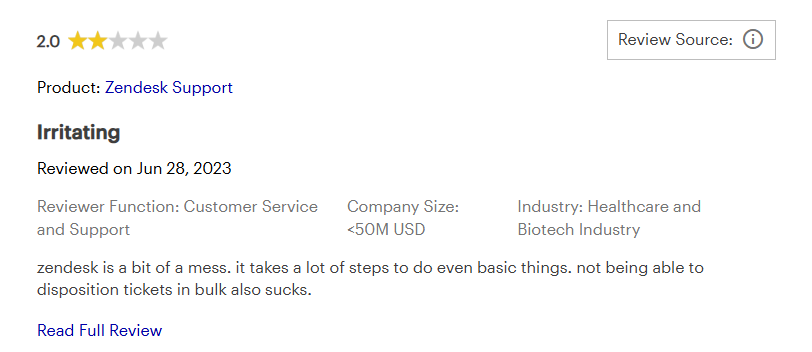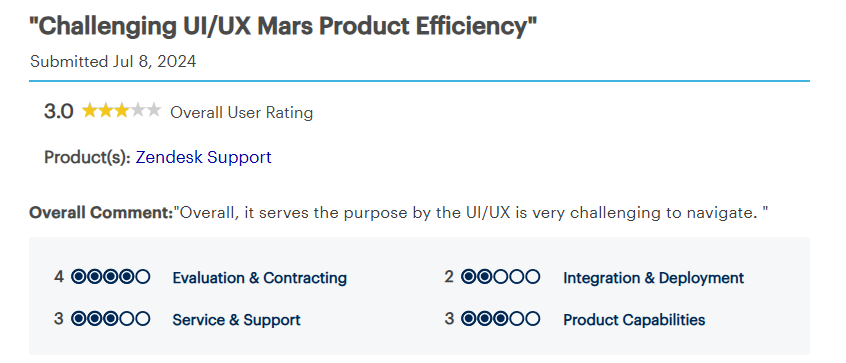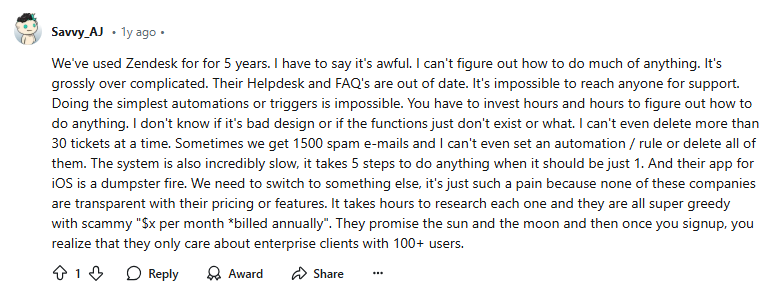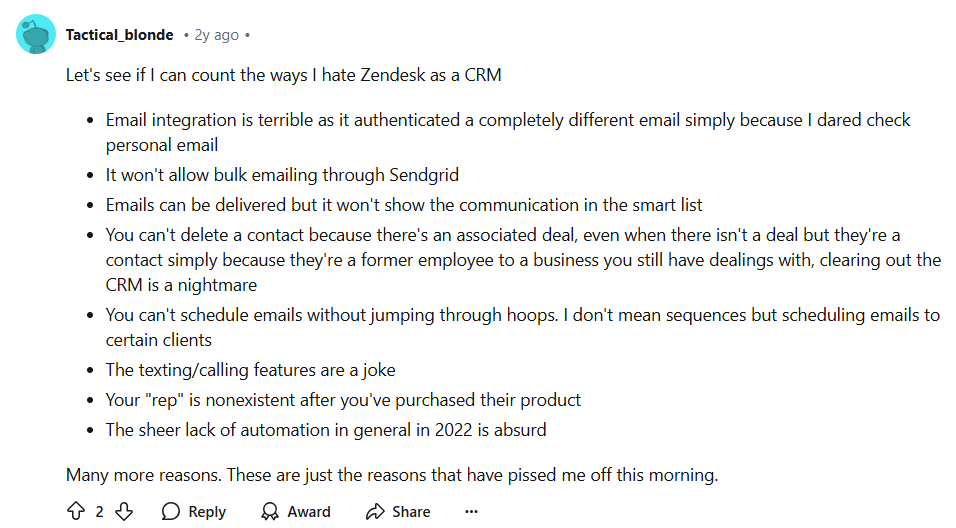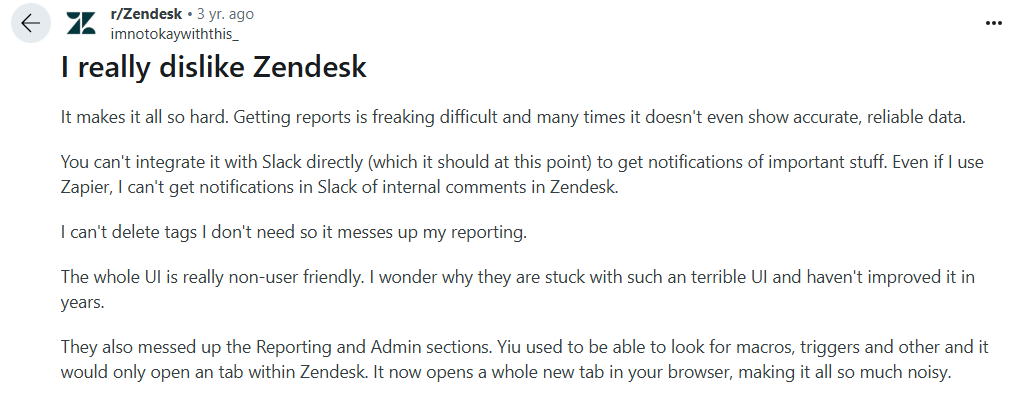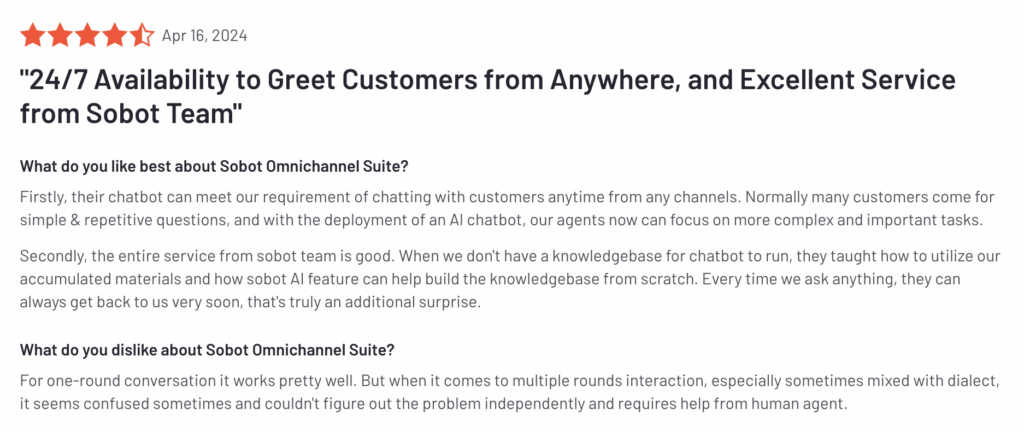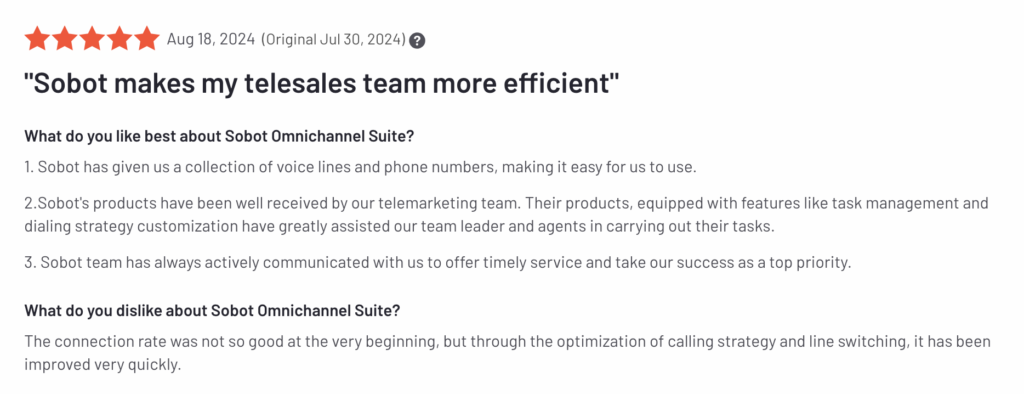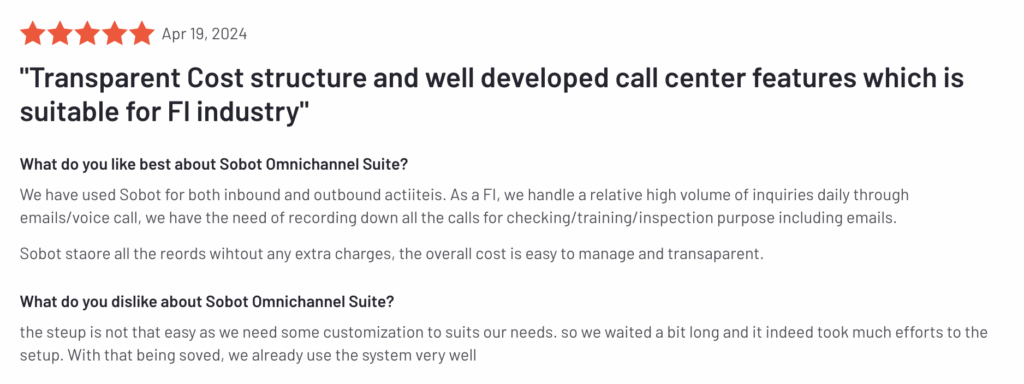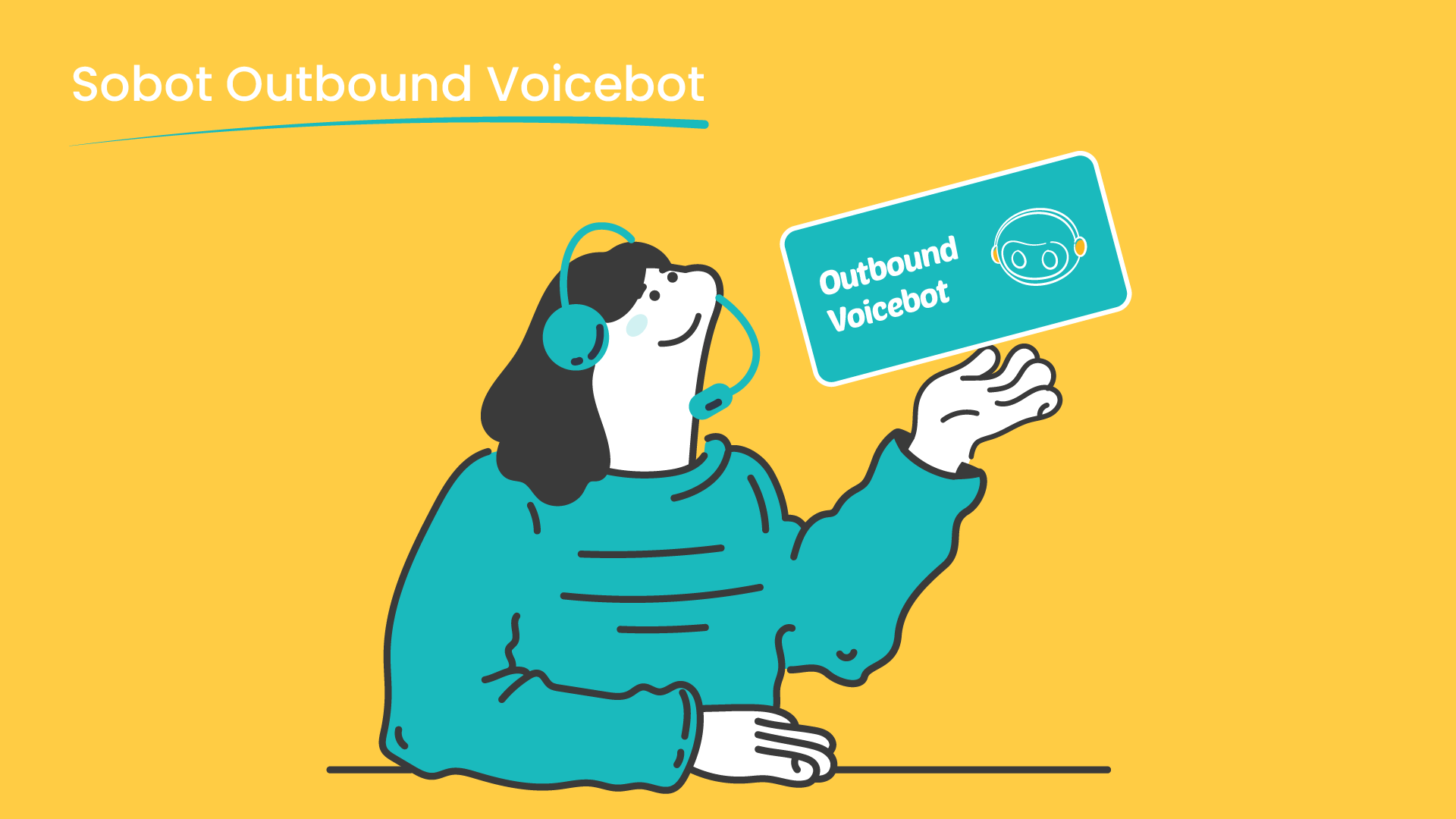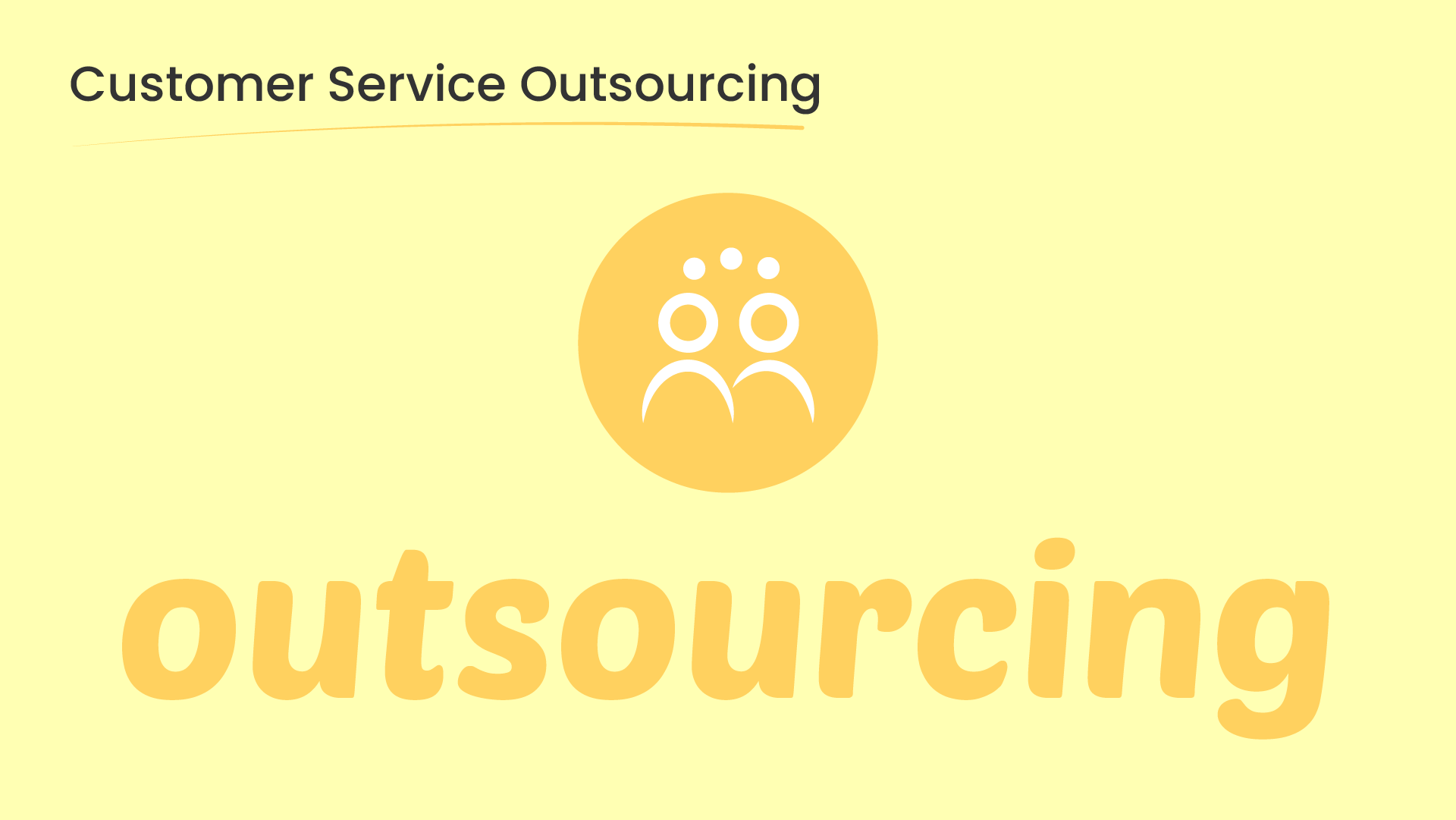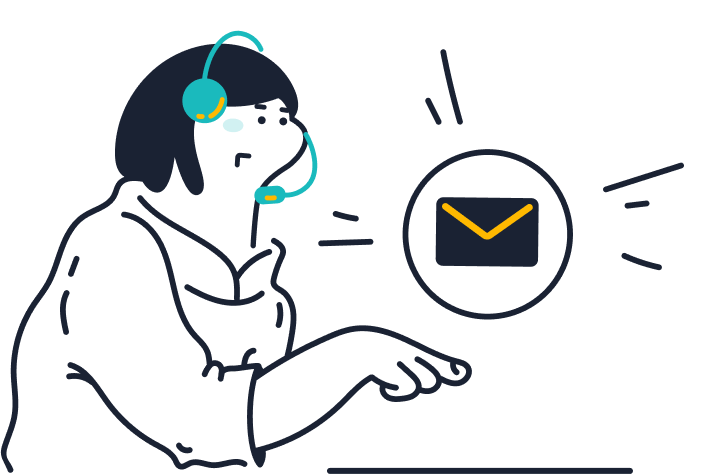Customer service platforms have revolutionized the way businesses interact with their customers. In today’s highly competitive marketplace, where customer satisfaction is key to survival, these platforms are crucial in building and maintaining customer loyalty.
Zendesk has been a household name in this space for a long time and is a favorite among companies looking for reliable tools to manage customer relationships. Yet newer entrants like Sobot show that with innovation, there’s still plenty of room around the edges to address many of Zendesk’s shortcomings.
This article deep-dives into Zendesk, revealing its products, advantages, disadvantages, and customer reviews to tell why you need to seek for alternatives of Zendesk. Hopefully it could help you decide on the best solution for your business.
The Necessity of Customer Service Platforms
A good customer service platform has become essential for companies to manage interactions with their customers across various channels, including email, chat, phone, and even social media while ensuring consistency and efficiency. Nearly 80% of customers make purchasing decisions based on their experience with a company, and businesses cannot afford to ignore the quality of their customer service.
For example, consider a retail customer reaching out to the company via live chat regarding a complaint related to a recent purchase. Good customer service software should support the conversation by emailing it if they call again in a week in the context of the previous discussion. That kind of service will reassure customers and keep them coming back.
Until now, Zendesk has been leading by providing the most in-depth toolkit for business requirements. However, Zendesk’s solutions may not work well for companies that have grown or have specific needs; therefore, competition like Sobot can bring individualized solutions.
Zendesk: Solutions and Products

Reputed for an entire spectrum of products designed to facilitate any aspect of customer interaction, the reputation of Zendesk is based on these products, which enable organizations to optimize any element of customer service or sales.
Zendesk Support
Zendesk Support acts as a ticketing system that centralizes customer conversations across channels, thus ensuring that support teams can, with high efficiency, allocate, track, and solve tickets to manage vast volumes of customer queries.
Zendesk Guide
Self-service has become the cornerstone of modern customer support. Through the Zendesk Guide, businesses can create FAQ sections, tutorials, and knowledge bases to let customers answer questions themselves. This reduces the burden on support agents while ensuring they give customers an enhanced experience.
Zendesk Chat
Real-time communication is vital for successful conversion for sectors such as e-commerce or hospitality. Companies can engage customers instantly by responding to queries, solving problems, or helping them buy something using Zendesk Chat.
Zendesk Talk
Voice support is also an essential channel for customer support; Zendesk Talk has integrated phone support into its service. Functions such as call routing, IVR, and call recording make it far easier for teams to manage calls. A healthcare provider can use Zendesk Talk to schedule appointments or answer patient questions.
Zendesk Explore
Data is essential for better customer service. Zendesk Explore offers analytics and reports, enabling a company to track its performance metrics, such as ticket resolution time, agent productivity, and customer satisfaction.
Zendesk Sell
Zendesk Sell is a sales CRM that tracks leads and manages pipelines. Sales and support are tied up with Zendesk so that customers can experience continuity while following their journey with a brand.
Although such tools are powerful, they have their fair share of challenges.
Disadvantages of Zendesk
Although it is still leading the charts in the customer service market, some limitations are related to Zendesk. Several users have aired their grievances regarding the system’s shortcomings from cost and complexity up to scalabilities and support issues. It makes this software less appropriate for some businesses, particularly smaller firms with special requirements.
 High Cost
High Cost
One of the most significant cons of Zendesk is that it costs a lot, which can bar small businesses and startups from using the service. The entry-level plan of Zendesk’s team suite costs $55 per agent per month, with quite limited features and functions. Businesses interested in accessing the platform’s more advanced features must opt for higher-tier plans, which may cost $115 or more per agent per month.
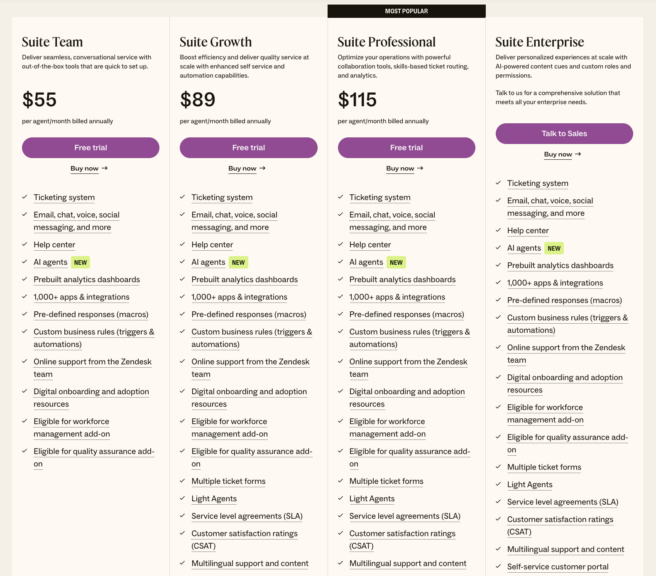
Besides, Zendesk charges for some add-on services, such as advanced AI, workforce management, quality assurance, workforce engagement bundle, advanced data privacy and protection, which has further increased enterprises’ costs.
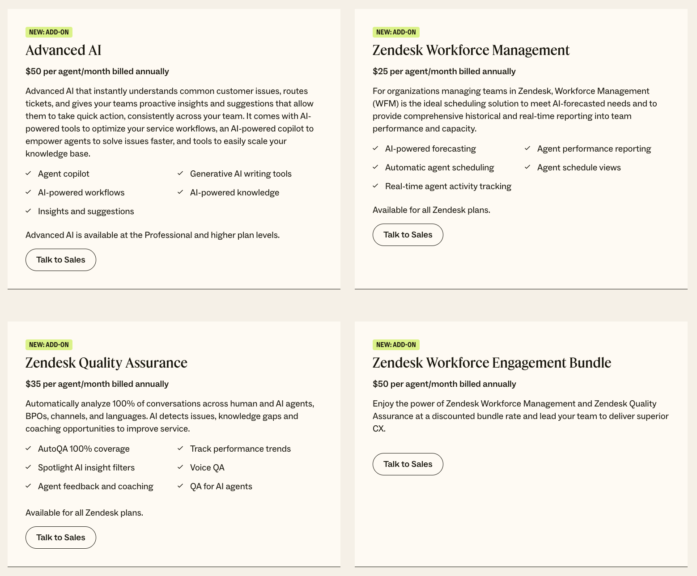
Such a pricing model can be too hefty for growing businesses. For example, a new venture may choose the basic Zendesk to cater to its small customer service requirements. However, as the company expands, it will require advanced reporting, AI-based automation, or heavy integration capabilities, for example, and may become locked into an upgrade to pricier plans. That escalation in cost can be too stressful on a budget, and businesses may have to forgo fundamental features or seek a new home. As business scales, the cost of scaling with the platform becomes unsustainable.
A user wrote, “Full featured but costly and slow, frustrating account management and experience.”
 Complexity
Complexity
While powerful, Zendesk’s extensive feature set also makes the platform overwhelmingly complex for many users. New users often struggle with the interface, finding it unintuitive and difficult to navigate without proper training. Onboarding teams can take weeks to months to become fully proficient, which delays the platform’s utility and adds to operational costs.
Complexity may result in underusing the platform’s potential if the company is small or has limited technical experience.
A user wrote, “Zendesk is a bit of a mess. It takes a lot of steps to do even basic things, not being able to disposition tickets in bulk also sucks”.
This makes it challenging for businesses that need a plug-and-play solution. The steep learning curve makes teams spend much time and resources on training, which might not be within the confines of all organizations.
 Limited Customization
Limited Customization
Another much-criticized flexibility of Zendesk is minimal customization. Although the platform offers some customization, it falls short in organizations with odd workflows or specific needs.
For example, a nonprofit might need very customized workflows for handling donors, but that just doesn’t fit Zendesk’s customization in a rigid framework. Again, an e-commerce company might have to have incredibly custom customer-interaction workflows, and Zendesk may not play at that level.
 After-sales Customer Support Challenges
After-sales Customer Support Challenges
Perhaps the most ironically unflattering critique is directed at Zendesk’s support for customers. A service aimed to make the delivery of customer care easier, Zendesk falls short sometimes with lengthy response times and an apparent lack of urgency in solving user problems.
Users complained about the waiting time to get support services, particularly when the disruption in business activities worsens. Such delays can become extremely expensive for companies heavily dependent on Zendesk as a mission-critical tool, causing customer dissatisfaction and operational bottlenecks.
 Fragmented Integration
Fragmented Integration
At the start of its business, Zendesk’s ticketing system came with many features. But with other products– live chat was bought from Smooch, voice from Genesys, and number resources from Twilio. The products are too complex to give an integrated experience to the customers.
For businesses that rely significantly on Zendesk as a mission-critical tool, these integration problems can create operational bottlenecks. System inefficiencies can delay the resolution of customer queries, which can adversely affect overall service quality and customer retention. Businesses may have to incur additional costs for implementing workarounds or hiring technical experts to streamline the process, thereby adding to the overall cost of ownership.
 Lack of Proactive Support
Lack of Proactive Support
Zendesk’s system is mainly based on passive reception and does not support proactive marketing.
 Scalability Issues
Scalability Issues
Lastly, Zendesk has been a big problem for companies that expand rapidly. Although the platform is excellent for small to mid-sized businesses, large organizations with extensive needs do not find it easy to scale without adding huge costs. For instance, organizations requiring more agents or additional complex functionalities, such as AI-driven automation, might not have the scale or growth in place.
Zendesk Reviews: What Users Say
Reviews by users of Zendesk tell a divided story of appreciation and frustration. It is highly praised for its extensive features and reliability. Complaints usually revolve around the cost, often revealing customization limitations.
One reviewer has commented: “Zendesk serves the purpose by the UI/UX is very challenging to navigate”.
One of the users said, “We’ve used Zendesk for 5 years. I have to say it’s awful. I can’t figure out how to do much of anything. It’s grossly overcomplicated. Their Helpdesk and FAQ’s are out of date. It’s impossible to reach anyone for support. Doing the simplest automation or triggers is impossible. You have to invest hours and hours to figure out how to do anything. I don’t know if it’s bad design or if the functions just don’t exist or what. I can’t even delete more than 30 tickets at a time. Sometimes we get 1500 spam e-mails and I can’t even set an automation/rule or delete all of them.
The system is also incredibly slow, it takes 5 steps to do anything when it should be just 1. And their app for IOS is a dumpster fire. We need to switch to something else, it’s just such a pain because none of these companies are transparent with their pricing or features. It takes hours to research each one and they are all super greedy with scammy “$x per month “billed annually”. They promise the sun and the moon and then once you sign up, you realize that they only care about enterprise clients with 100+ users.”
One user on G2 quoted, “Good software, terrible support.”
Another user on G2 gave them a 1-star rating and quoted, “Poor business practices.”
One of the users commented, “Disastrous UI update.” Besides, a user quoted, “ Overpriced, support sucks big time, sales team are super sneaky-avoid Zendesk.”
Sobot: A Competitive Zendesk Alternative
Platforms like Sobot have emerged as more affordable, user-friendly solutions to overcome some of Zendesk’s deficiencies. Designed to meet the requirements of today’s businesses, Sobot offers a comprehensive toolset that matches Zendesk’s capability yet overcomes most of its deficiencies.
Core Features of Sobot
Sobot is a leading global contact center solution provider, offering a suite of solutions and services, including chatbot, live chat, voice, ticketing system, messaging, and WhatsApp Business API. These solutions guarantee smooth communication while helping teams become more efficient.
From small startups to multinational enterprises, Sobot has served over 10,000 brands across diverse industries in 18+ languages, believing that every business should have access to innovative customer experience tools.

Sobot vs Zendesk: Advantages
 Integration
Integration
With the all-in-one contact center solution, all products are researched and developed by Sobot itself. Sobot enjoys clear settings, concise products, data interoperability, flexible functions, and high scalability.
 Marketing
Marketing
Sobot supports marketing through various channels, such as WhatsApp, SMS, and so on. Combined with OneID and the rule engine, it provides overseas marketing and proactive support solutions.
 Service
Service
Besides products, high-quality and effective service is another highlight of Sobot. Sobot’s team will help customers in the entire process, such as pre-sale consultation, deployment and after-sale operation, etc.
 Sobot Reviews
Sobot Reviews
Attached below are some snippets depicting user reviews on Sobot.
 Sobot Advantages over Zendesk
Sobot Advantages over Zendesk
One of Sobot’s most attractive advantages is the cost difference. Whereas Zendesk is quite expensive, Sobot is relatively cheap compared to Zendesk, and it offers full features without any additional hidden charges. Therefore, it can suit small and medium-sized businesses.
Sobot has excellent customization options, so businesses can make the platform suitable for their workflows. It also has a user-centered design that allows new users to navigate its platform reasonably easily, thus reducing onboarding times.
The reviews of Sobot point out its effectiveness and value for money.
A user said, “Sobot has completely revolutionized our customer service operations. The chatbot alone reduced our response times by 50%.”
Another user said, “From Zendesk to Sobot – it has been one of the best decisions ever made. This is an easy-to-use platform with a highly responsive support team.”

Comprehensive Comparison: Why can Sobot Become Zendesk Alternative?
Both have good features; however, Sobot has advantages in pricing, customization, and user experience. Sobot is suitable for businesses that value affordability and flexibility.
It has been quite a while since Zendesk brought its name to the forefront of the customer service industry, but its high cost, complexity, and so forth have opened a door for challengers like Sobot. This company addresses those issues: affordability in pricing, intuitive design, and advanced features such as AI chatbots.
For a business evaluating its customer service platform, Sobot is an attractive alternative that combines functionality and affordability. By carefully assessing your organization’s needs, you can choose the platform that best aligns with your goals of delivering exceptional customer experiences.
| Zendesk | Sobot | |
| Product & Solution | 1. While powerful, Zendesk’s extensive features also make the platform overwhelmingly complex for many businesses. 2. On top of that, the project is not a complete suite, with its ticketing system powerful but other product capacities weak. This deficiency is especially serious when businesses need to serve customers with a combination of chatbot, voice, and other products. 3. Zendesk’s system is mainly based on passive reception and does not support proactive marketing. |
1. With the all-in-one contact center solution, all products are researched and developed by Sobot itself. Sobot enjoys clear settings, concise products, data interoperability, flexible functions, and high scalability. 2. Sobot supports marketing through various channels, such as WhatsApp, SMS, and so on. Combined with OneID and the rule engine, it provides globalized marketing and proactive support solutions. |
| Price | Expensive, with additional costs for many capabilities such as advanced AI, workforce management, quality assurance, etc. | Sobot supports subscription mode, with a reasonable pricing, versatile functions, and flexible pricing model In addition, Sobot also supports private cloud and dedicated cloud model for medium to large businesses. |
| Service | New and existing customers have a lot of complaints: new customers can’t get targeted product guidance and industry best practices; old customers can’t get quick response, and spend too much time in waiting for after-sales issues to be resolved. | Besides products, high-quality and effective service is another highlight of Sobot. Sobot’s team helps customers in the entire process, such as pre-sale consultation, deployment and after-sale operation, etc. |
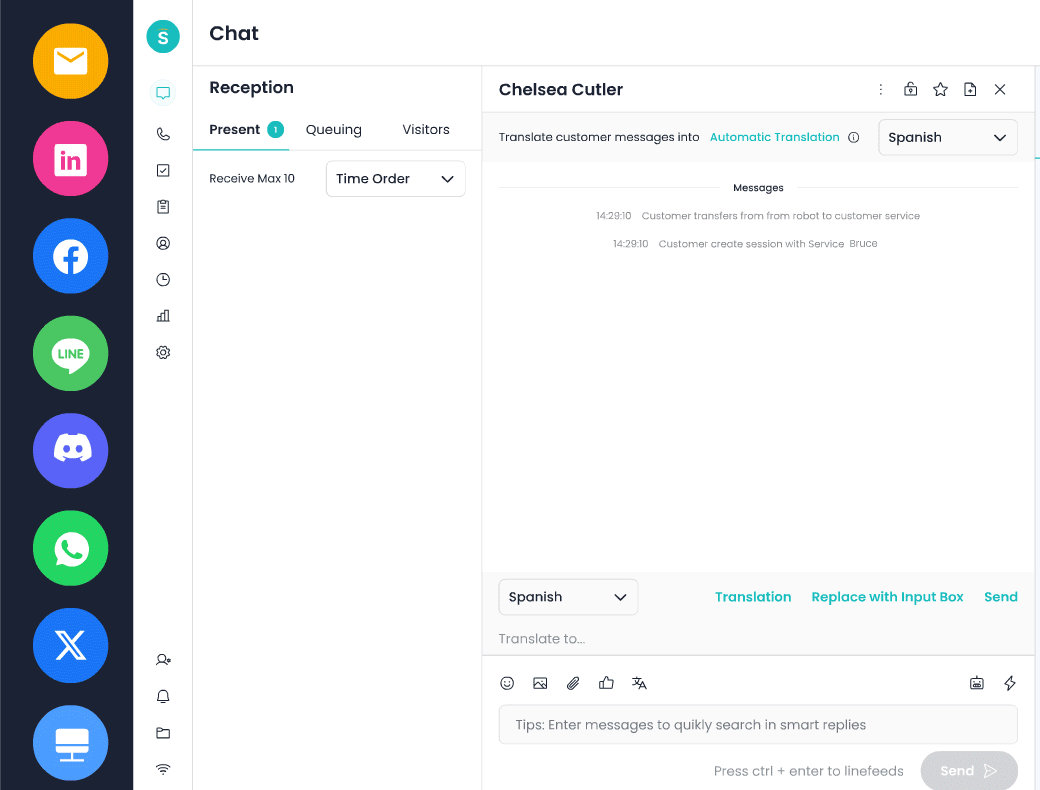
References
What is Zendesk, and is it good for your business?
Zendesk & Geckoboard: Some Suite Improvements | Geckoboard blog
Sobot Introduces its All-in-One Solution at GITEX Global 2024
Zendesk Reviews 2024: The Good, the Bad and the Ugly
Top 10 Cons & Disadvantages of Using Zendesk Software
Smart Automation with Sobot Chatbot – Sobot Blog
